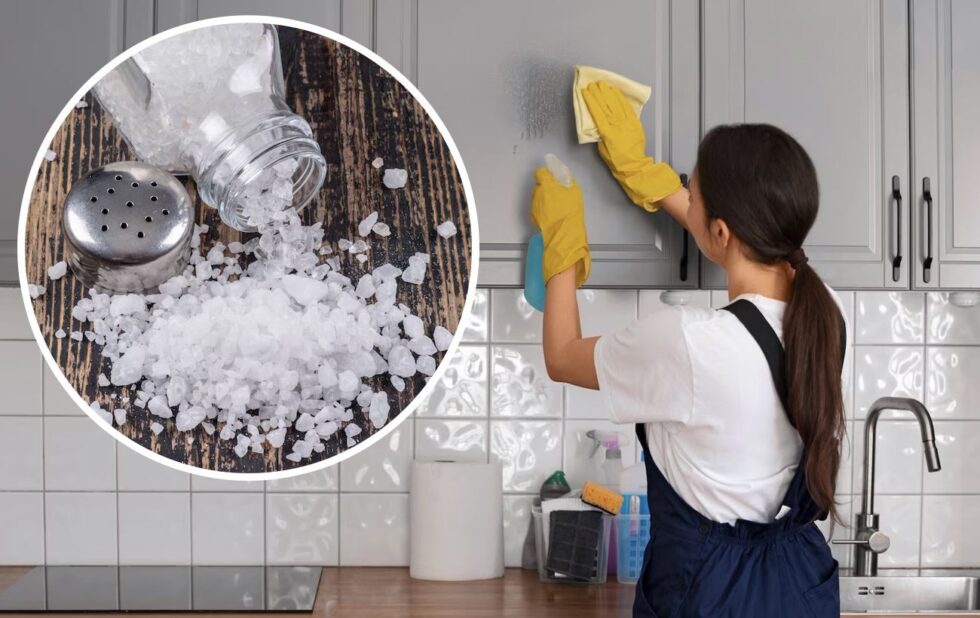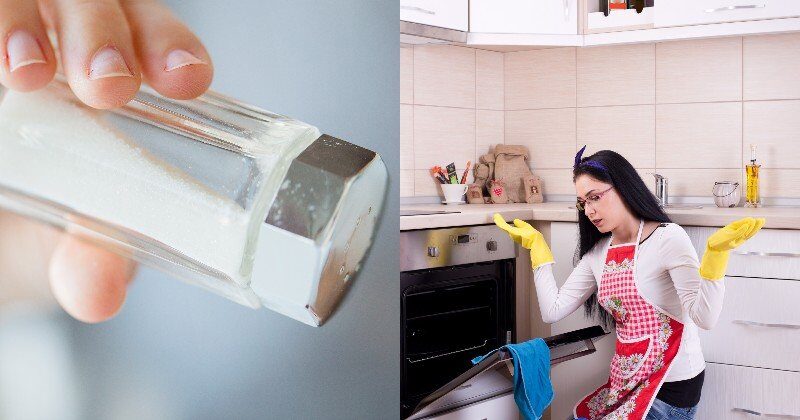How can kitchen salt be used not only in food but also for home cleaning

Kitchen salt is one of the most affordable and versatile products in every household. While it is primarily known as a staple in cooking, its usefulness extends far beyond the kitchen. Salt can effectively replace many chemical cleaning agents, making it both eco-friendly and budget-friendly. From removing stains and deodorizing surfaces to cleaning cookware and even brightening fabrics, salt has countless practical applications. Understanding these methods helps households save money, reduce chemical use, and keep their homes naturally clean, as reported by G.business.
Salt as a natural stain remover
Salt has strong absorbent and abrasive properties, making it an excellent tool for removing fresh stains. For instance, when wine or coffee spills on fabric, sprinkling salt immediately can prevent deep penetration. It absorbs liquid quickly and allows easier washing afterwards. Salt also helps with greasy marks on tablecloths, carpets, and upholstery. Using salt as a first-aid cleaner minimizes the need for harsh detergents.
Practical uses:
- Sprinkle salt on wine stains before washing.
- Rub salt into greasy spots on tablecloths.
- Mix salt with lemon juice to remove rust stains.
- Apply salt paste to ink stains for better absorption.
- Combine salt with vinegar to clean tile grout.
Cleaning kitchenware with salt
One of the most effective and safe applications of salt is cleaning pots, pans, and cutting boards. Its natural abrasiveness removes food residues without scratching delicate surfaces. Salt also neutralizes unpleasant odors, especially from wooden boards used for chopping garlic or fish. Regular cleaning with salt ensures longer life of cookware and eliminates the need for strong chemicals. This makes it particularly useful in eco-conscious households.
Recommended methods:
- Use salt and hot water to clean cast iron pans.
- Sprinkle salt on cutting boards, then scrub with a lemon.
- Clean burnt food from pans with a paste of salt and water.
- Polish copper cookware with salt and vinegar.
- Remove coffee or tea stains from cups with salt scrubbing.
Salt for deodorizing and freshening
Salt naturally absorbs odors, making it a perfect alternative to chemical air fresheners. By placing small bowls of salt in different areas of the house, you can neutralize bad smells caused by cooking, pets, or humidity. Salt can also refresh shoes, gym bags, and refrigerators. This simple solution not only improves air quality but also contributes to a cleaner environment. Its neutralizing effect is especially valuable in closed spaces with little ventilation.
Effective uses:
- Place salt in the fridge to absorb odors.
- Put salt in shoes overnight to remove moisture and smell.
- Add salt to laundry to eliminate strong sweat odors.
- Mix salt with baking soda for natural carpet deodorizing.
- Use salt as a scrub in drains to prevent bad smells.
Salt in laundry and fabric care
Adding salt to laundry can significantly improve washing results. It helps preserve colors, prevents fabric fading, and keeps whites bright. Salt is especially useful for setting colors in new clothes and removing yellow stains from fabrics. It also works well in reducing detergent residue, leaving fabrics softer. Regular use of salt in laundry routines makes clothes last longer and look fresher.
Laundry tips with salt:
- Add 1/2 cup of salt to wash bright colors.
- Use salt to remove sweat stains from shirts.
- Soak yellowed fabrics in saltwater overnight.
- Combine salt with lemon juice to brighten whites.
- Reduce detergent residue by adding salt to rinse cycles.
Salt for cleaning and maintaining surfaces
Salt can be used in many areas of the home to keep surfaces clean and shiny. Its mild abrasive quality makes it suitable for tiles, sinks, ovens, and even bathroom fixtures. Unlike aggressive cleaning powders, salt is safe for most surfaces and leaves them polished without damage. Mixed with vinegar or lemon juice, it becomes even more powerful against dirt and limescale. This combination of simplicity and effectiveness makes salt one of the most underestimated cleaning tools.

Home surface applications:
- Scrub sinks and tiles with salt paste.
- Clean oven surfaces with salt and baking soda.
- Remove limescale stains from faucets with salt and vinegar.
- Polish brass and silver items with salt and lemon.
- Brighten glassware by soaking it in saltwater.
Kitchen salt is much more than a seasoning — it is a multifunctional tool for a clean and fresh home. Its natural cleaning properties help reduce the use of chemicals, making it a safe choice for families and environmentally conscious households. By integrating salt into daily routines, homeowners can maintain cookware, fabrics, and surfaces more effectively. It also serves as a quick solution for unexpected spills or odors. In the long term, using salt for cleaning saves money while ensuring a healthier living space. Practical, simple, and sustainable — salt proves that sometimes the most effective solutions are already in our kitchens.
Stay connected for news that works — timely, factual, and free from opinion — and insights that matter now: What are the 10 proven tips to remove bad smells at home